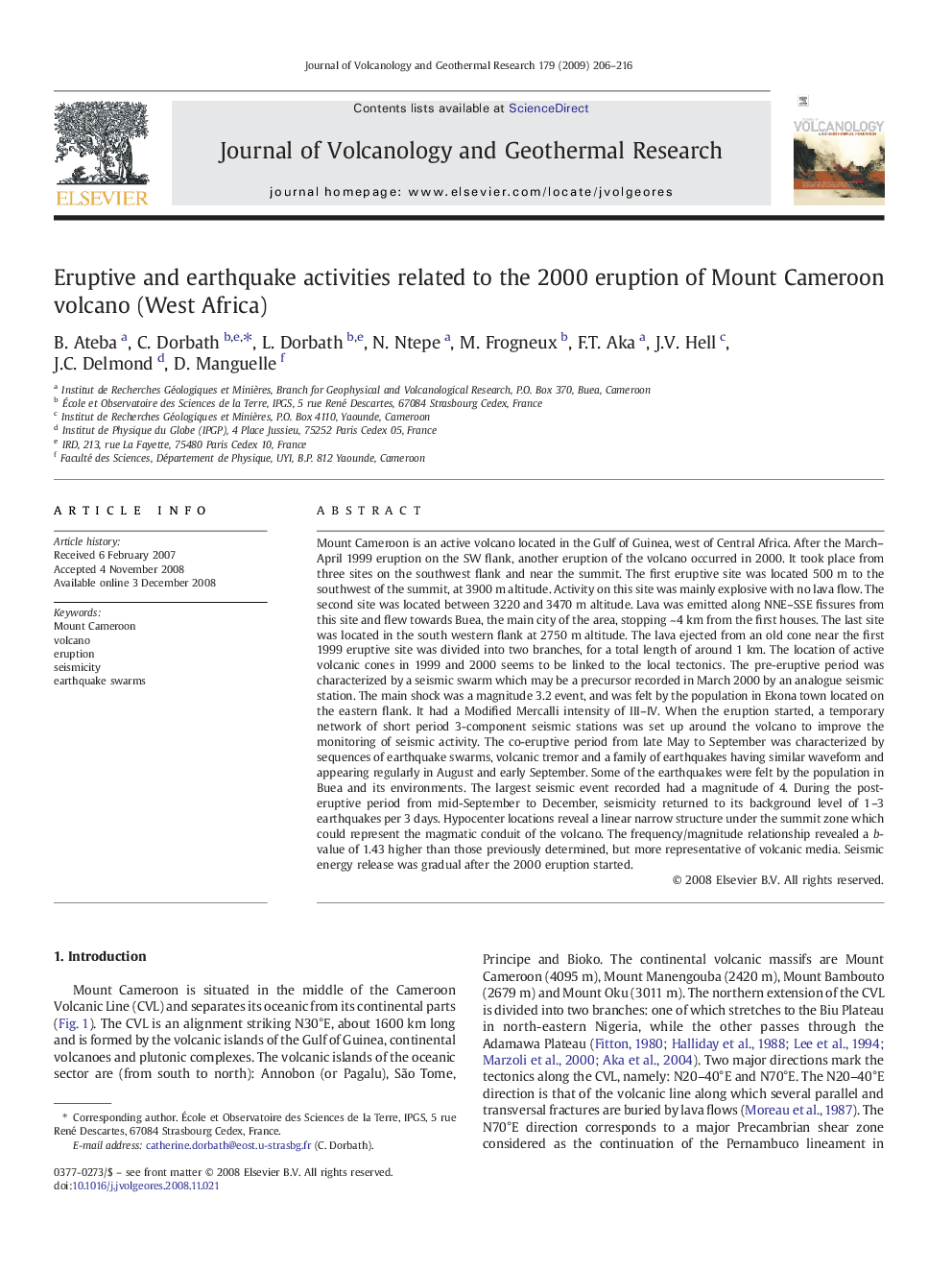| کد مقاله | کد نشریه | سال انتشار | مقاله انگلیسی | نسخه تمام متن |
|---|---|---|---|---|
| 4714345 | 1638443 | 2009 | 11 صفحه PDF | دانلود رایگان |

Mount Cameroon is an active volcano located in the Gulf of Guinea, west of Central Africa. After the March–April 1999 eruption on the SW flank, another eruption of the volcano occurred in 2000. It took place from three sites on the southwest flank and near the summit. The first eruptive site was located 500 m to the southwest of the summit, at 3900 m altitude. Activity on this site was mainly explosive with no lava flow. The second site was located between 3220 and 3470 m altitude. Lava was emitted along NNE–SSE fissures from this site and flew towards Buea, the main city of the area, stopping ~ 4 km from the first houses. The last site was located in the south western flank at 2750 m altitude. The lava ejected from an old cone near the first 1999 eruptive site was divided into two branches, for a total length of around 1 km. The location of active volcanic cones in 1999 and 2000 seems to be linked to the local tectonics. The pre-eruptive period was characterized by a seismic swarm which may be a precursor recorded in March 2000 by an analogue seismic station. The main shock was a magnitude 3.2 event, and was felt by the population in Ekona town located on the eastern flank. It had a Modified Mercalli intensity of III–IV. When the eruption started, a temporary network of short period 3-component seismic stations was set up around the volcano to improve the monitoring of seismic activity. The co-eruptive period from late May to September was characterized by sequences of earthquake swarms, volcanic tremor and a family of earthquakes having similar waveform and appearing regularly in August and early September. Some of the earthquakes were felt by the population in Buea and its environments. The largest seismic event recorded had a magnitude of 4. During the post-eruptive period from mid-September to December, seismicity returned to its background level of 1–3 earthquakes per 3 days. Hypocenter locations reveal a linear narrow structure under the summit zone which could represent the magmatic conduit of the volcano. The frequency/magnitude relationship revealed a b-value of 1.43 higher than those previously determined, but more representative of volcanic media. Seismic energy release was gradual after the 2000 eruption started.
Journal: Journal of Volcanology and Geothermal Research - Volume 179, Issues 3–4, 20 January 2009, Pages 206–216